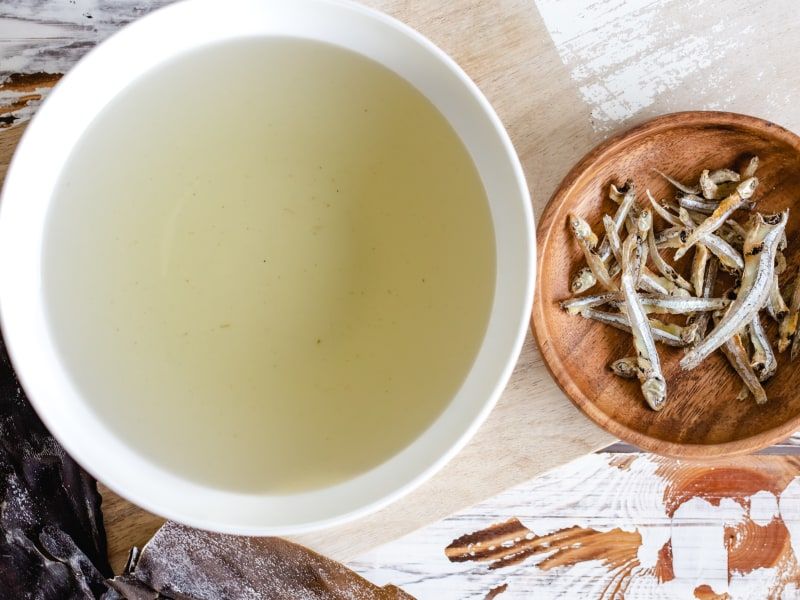Awase Dashi/Ichiban Dashi Recipe
Awase dashi also known as Ichiban dashi is the most basic kind of Japanese dashi.

It hasn't been long since I started making Korean dishes. My husband and I are big fans of Korean food, but never made dishes at home except for KBBQ. The recipes may seem intimidating at first, but once you learn to make the Anchovy Broth, you'll notice that it's a staple in many Korean dishes. Just off the top of my head, it's a base I use in Soft Tofu Stew (Kimchi Soondubu Jjigae) and Tteokbokki (Spicy Rice Cakes).
Despite its name, the finished broth is light and flavorful, without being fishy. There are many variations that you can make, but for this recipe we'll be using just dried anchovies (myeolchi, 멸치) and dried kelp (dashima, 다시마).
Buying Dried Anchovies
Dried anchovies are typically sold in plastic bags that can be found on aisle shelves or the refrigerated area. For this recipe, you'll be looking for large anchovies (gukmulyong mareunmyeolchi 국물용 마른멸치) which are best for flavoring soups and stews. If you use medium anchovies, add a bit more.
Store leftovers in the ziploc bag or airtight container in the freezer for up to 1 year.

Preparing Large Dried Anchovies
You're going to need to remove the guts/intestines before using them. Otherwise, the broth will be bitter. This step seems way more difficult than it is. If you've ever devein shrimp, this is as close as it'll get. Cut a slit underneath the anchovy near the head and scrape out the black innards.
Buying and Preparing Dashima (Kombu)
Dashima (다시마) is kelp that's commonly used to make stock then thrown away. Don't confuse this with the seaweed Koreans use for miyeok guk or the seaweed used for sushi. Dried dashima comes in slightly thick flat sheets with white powder on the surface.
It's best to not wash the white powder off, since that adds to the natural flavor. If you must, gently wipe dashima with a dampened cloth just to remove sand or grit. Keep leftovers stored in a cool dry place.

Anchovy Packets
Some grocery stores sell anchovy packets that contain dried anchovies and dried kelp already proportioned. All you need to do is drop a packet into a pot of water. If you opt for this option, make sure you check the ingredients since some of them have shrimp or other flavors included.

Making Anchovy Broth
After the prep work, the actual process is very simple. Boil some water, add anchovies and kelp, then strain. I suggest soaking the ingredients in the water for at least 20 minutes before turning the heat on.
Prep Time: 5 minutes
Soak Time: 20 minutes
Cook Time: 10 minutes
Total Time: 35 minutes
Yield: about 6 cups
Ingredients
-12 large dried anchovies
-2 pieces of dried dashima, 3-inch squares
-8 cups water
Instructions
1. Prepare the anchovies by removing the innards. Remove the heads if you would like, but I prefer to leave them for more flavor.
2. Soak the anchovies and kelp in the water for at least 20 minutes in a medium sized pot.
3. Bring it to a gentle boil, uncovered. Reduce the heat to medium high and boil for 10 minutes.
4. Strain the liquid to remove anchovies and dashima from the stock.
Note: Store leftover anchovy stock in refrigerator for 3-4 days or freeze for later use.